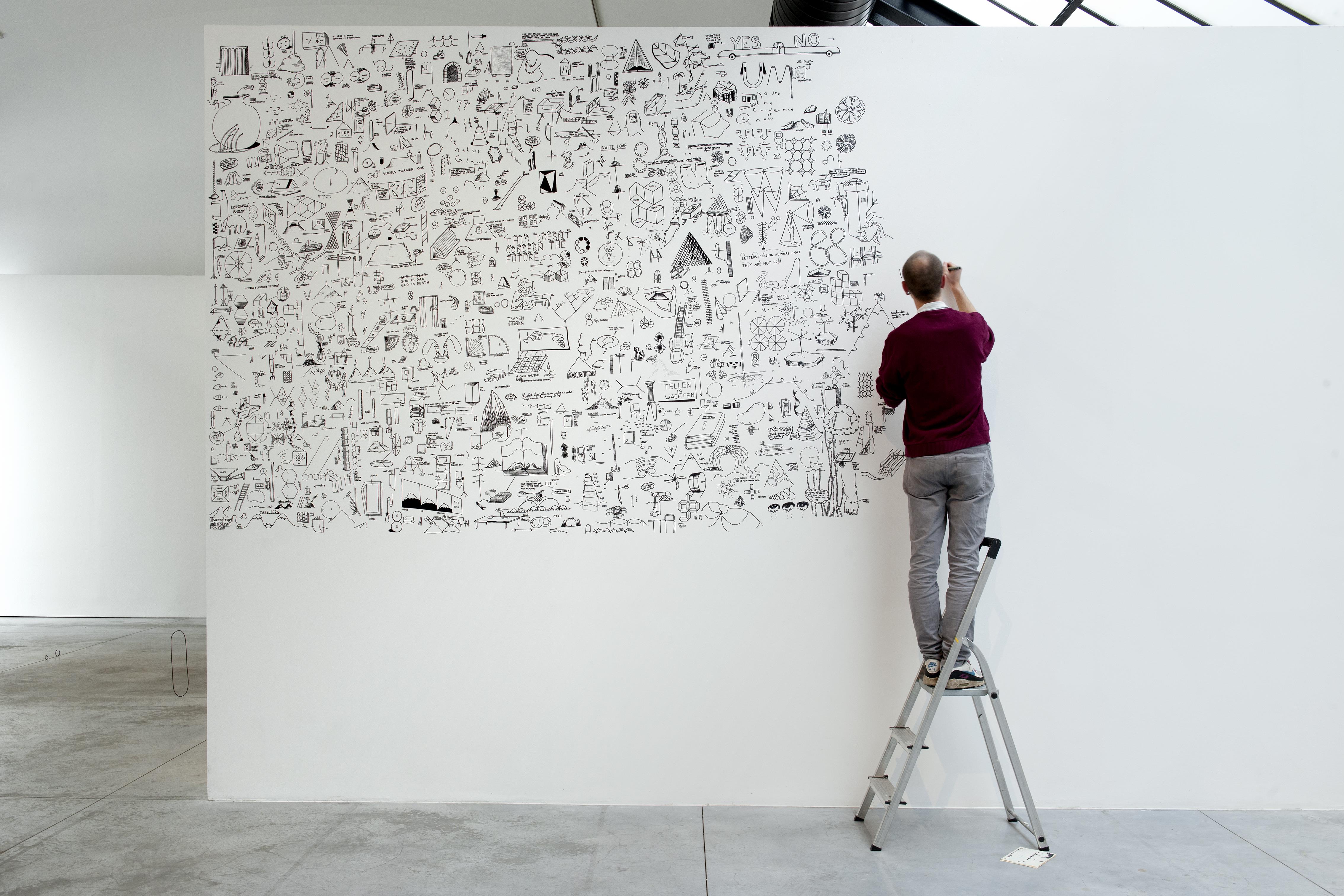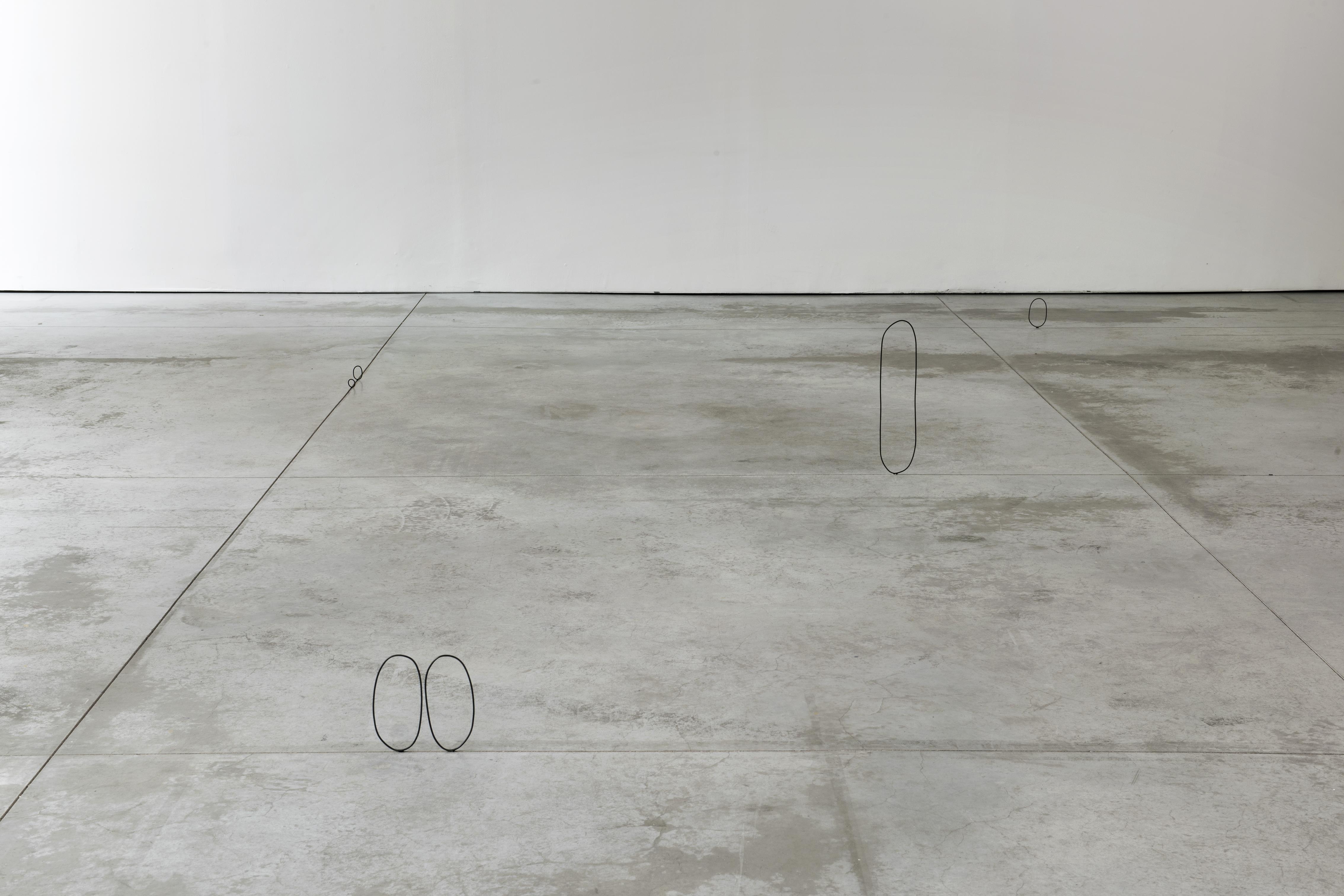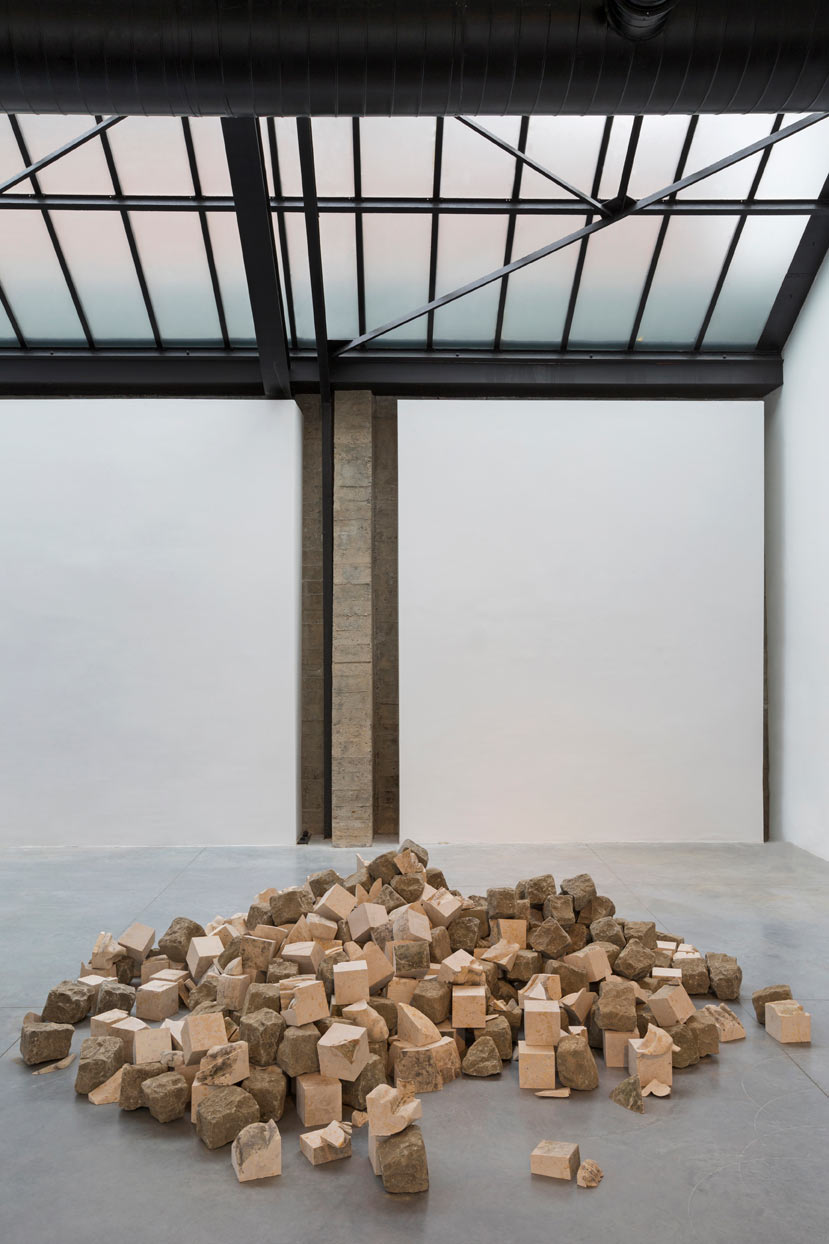
Installation view with Alicja Kwade, Judith Hopf, Jean Prouvé, Erika Hock
Photo by Laurent Brandajs
Photo by Laurent Brandajs
Inhabited by objects
a dialogue with the House of Jean Prouvé I
co-curated with Eléonore De Sadeleer
with Koenraad Dedobbeleer, Ode de Kort, Erika Hock, Judith Hop, A Kassen, Alicja Kwade, Tony Matelli, Peter Regli, Rosa Sijben, Timo van Grisven
Fondation CAB
09.11.16 - 28.01.2017
Ixelles, Brussels (BE)
a dialogue with the House of Jean Prouvé I
co-curated with Eléonore De Sadeleer
with Koenraad Dedobbeleer, Ode de Kort, Erika Hock, Judith Hop, A Kassen, Alicja Kwade, Tony Matelli, Peter Regli, Rosa Sijben, Timo van Grisven
Fondation CAB
09.11.16 - 28.01.2017
Ixelles, Brussels (BE)
CAB is pleased to announce its first collective exhibition around the 6×6 Demountable House by Jean Prouvé. The house, conceived in 1944, is the focal point of CAB’s 2016-2017 programme. For this exhibition it is brought in dialogue with work by both Belgian and international contemporary artists.
Through the presence of this architectural object, Inhabited by objects unfolds itself as both an interior and an exterior. This ambiguity challenges our perception, our expectations and our interaction with objects. The artworks on show blur the lines between architecture, furniture, untensils, abstract objects and living creatures. This confusion counts as an invitation to reflect upon our preconceived ideas related to context, and on the mental categorisations we apply when perceiving objects. Additionally, it it tends to reflect on objects within the spectrum of their possible autonomies and actorship.
Considering the object as being context-dependent, Erika Hock (b. 1981, Kyrgyzstan), Rosa Sijben (b. 1988, Netherlands) and the Danish collective A Kassen (since 2004, Denmark) propose its constant redefinition and reinterpretation. In her Elbows and Knees series; furniture-like metal tube structures (one of which was created specifically in relation to Prouvé), Erika Hock confuses us with their dysfunctionality. In extent, Folding Structures resonates the modularity characteristic to Prouvé’s modular housing units. Rosa Sijben creates what she calls ‘situational choreographies’, situations that count as a disrupt between life and art to question the ‘raison d’être’ of everyday mundane objects, defined by a context’s function, its active users and its passive visitors. She disperses orange abstract blocks in the exhibition space in her performative installation Zouden Zullen Zijn. In their new production Cobblestone (Atlas), A Kassen draws on the notion of ‘Spolia’. Their use of this ancient practice in which parts of historic monuments and buildings are repurposed for new constructions, hints at the value of the object within the framework of art history’s canon.
Alicja Kwade (b. 1979, Poland), Ode de Kort (b. 1992, Belgium), Koenraad Dedobbeleer (b. 1975, Belgium) and Timo van Grinsven (b. 1985, Netherlands) question forms and objects that at first glance seem evident, deforming their nature to confuse or heighten our conscious perception. In her anthropomorphic mixed-media installation, Kwade deploys distortion to subtly alter our cognitive experience of time and space. Ode de Kort currently conducts a long-term research into the formal qualities of the circle, elaborating on the hidden dynamics within this apparent static form. Subsequently, Koenraad Dedobbeleer operates translations; he teases us with sculptures that seem familiar while non of them actually form part of our everyday surroundings. Timo van Grinsven will create an in-situ performative drawing inspired by archetypal forms, expressing his tendency to personally construct logistic structures and systems, formed by a mental game of back-and-forth associations between image and text.
The ‘elevated’ status of the art object is undermined through the works of Tony Matelli (b. 1971, United States), Peter Regli (b. 1959, Switzerland) and Judith Hopf (b. 1969, Germany). In her touching and almost pathetic installation Flock of Sheep, Hopf plays with the paradox between the immobility of concrete cast moving boxes, further inforced by the expressiveness of its drawn sheep heads. She claims to apply ‘stupidity’ to subvert the seriosity of the art world. Peter Regli similarly uses humor and irony in his series ‘Reality Hacking’ (since 1996) by capturing the iconic figure of the snow monster to implant it where it is least expected. He aims to surprise the viewer whose sensory experience of his surroundings easily gets obscured by daily stress. We find a similar direct approach in the series Weeds by Tony Matelli, sprouting from in between gallery walls and floors in a way that is both hyperrealist and surprising.
The suggestion of movement that connects the artworks on show, renders the exhibition with a human-like dynamics that is both playful and unsettling. This results in a surreal and absurdist scenographic arrangement that questions our expectations of what an object – sculpted, drawn, photographed or filmed – can be.
Through the presence of this architectural object, Inhabited by objects unfolds itself as both an interior and an exterior. This ambiguity challenges our perception, our expectations and our interaction with objects. The artworks on show blur the lines between architecture, furniture, untensils, abstract objects and living creatures. This confusion counts as an invitation to reflect upon our preconceived ideas related to context, and on the mental categorisations we apply when perceiving objects. Additionally, it it tends to reflect on objects within the spectrum of their possible autonomies and actorship.
Considering the object as being context-dependent, Erika Hock (b. 1981, Kyrgyzstan), Rosa Sijben (b. 1988, Netherlands) and the Danish collective A Kassen (since 2004, Denmark) propose its constant redefinition and reinterpretation. In her Elbows and Knees series; furniture-like metal tube structures (one of which was created specifically in relation to Prouvé), Erika Hock confuses us with their dysfunctionality. In extent, Folding Structures resonates the modularity characteristic to Prouvé’s modular housing units. Rosa Sijben creates what she calls ‘situational choreographies’, situations that count as a disrupt between life and art to question the ‘raison d’être’ of everyday mundane objects, defined by a context’s function, its active users and its passive visitors. She disperses orange abstract blocks in the exhibition space in her performative installation Zouden Zullen Zijn. In their new production Cobblestone (Atlas), A Kassen draws on the notion of ‘Spolia’. Their use of this ancient practice in which parts of historic monuments and buildings are repurposed for new constructions, hints at the value of the object within the framework of art history’s canon.
Alicja Kwade (b. 1979, Poland), Ode de Kort (b. 1992, Belgium), Koenraad Dedobbeleer (b. 1975, Belgium) and Timo van Grinsven (b. 1985, Netherlands) question forms and objects that at first glance seem evident, deforming their nature to confuse or heighten our conscious perception. In her anthropomorphic mixed-media installation, Kwade deploys distortion to subtly alter our cognitive experience of time and space. Ode de Kort currently conducts a long-term research into the formal qualities of the circle, elaborating on the hidden dynamics within this apparent static form. Subsequently, Koenraad Dedobbeleer operates translations; he teases us with sculptures that seem familiar while non of them actually form part of our everyday surroundings. Timo van Grinsven will create an in-situ performative drawing inspired by archetypal forms, expressing his tendency to personally construct logistic structures and systems, formed by a mental game of back-and-forth associations between image and text.
The ‘elevated’ status of the art object is undermined through the works of Tony Matelli (b. 1971, United States), Peter Regli (b. 1959, Switzerland) and Judith Hopf (b. 1969, Germany). In her touching and almost pathetic installation Flock of Sheep, Hopf plays with the paradox between the immobility of concrete cast moving boxes, further inforced by the expressiveness of its drawn sheep heads. She claims to apply ‘stupidity’ to subvert the seriosity of the art world. Peter Regli similarly uses humor and irony in his series ‘Reality Hacking’ (since 1996) by capturing the iconic figure of the snow monster to implant it where it is least expected. He aims to surprise the viewer whose sensory experience of his surroundings easily gets obscured by daily stress. We find a similar direct approach in the series Weeds by Tony Matelli, sprouting from in between gallery walls and floors in a way that is both hyperrealist and surprising.
The suggestion of movement that connects the artworks on show, renders the exhibition with a human-like dynamics that is both playful and unsettling. This results in a surreal and absurdist scenographic arrangement that questions our expectations of what an object – sculpted, drawn, photographed or filmed – can be.

Erika Hock in dialogue with Jean Prouvé
Photo by Philippe Degobert
Photo by Philippe Degobert

Rosa Sijben
Photo by Philippe Degobert
Photo by Philippe Degobert

Timo Van Grinsven
Photo by Philippe Degobert
Photo by Philippe Degobert

Ode De Kort
Photo by Philippe Degobert
Photo by Philippe Degobert

Installation view with Jean Prouvé, Rosa Sijben, Judith Hopf
Photo by Philippe Degobert
Photo by Philippe Degobert
Erika Hock
Photo by Philippe Degobert
Photo by Philippe Degobert

A. Kassen
Photo by Philippe Degobert
Photo by Philippe Degobert